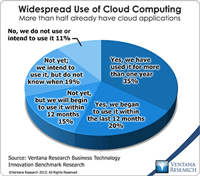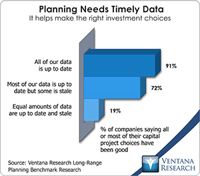There’s a growing realization that the multitenant approach to the cloud isn’t the only option that companies should weigh in deciding between deploying software on-premises and in the cloud. That some people describe the multitenancy approach as “the real cloud” reflects the contentious nature of some technical debates, especially those that occur early in the evolution of a new technology. Multitenancy does have advantages that confer cost savings, and these have been important in the first...
Read More
Topics:
Microsoft,
Mobile,
SaaS,
Sales,
Salesforce.com,
ERP,
HCM,
Human Capital,
Office of Finance,
Planview,
Concur,
Dynamics AX,
Dynamics GP,
Dynamics NAV Dynamics SL,
PSA,
Sage Software,
Unit4,
Analytics,
Cloud Computing,
Business Performance Management (BPM),
CFO,
Financial Performance Management (FPM),
FinancialForce,
HR,
Infor,
Tagetik,
Workday,
Workforce Performance Management (WPM),
Plex
Planview recently announced general availability of Planview Enterprise 11. The new release enhances the user experience through a comprehensive redesign of the interface to promote ease of use. The changes are intended to facilitate an integrated approach to long-range planning of capital projects and major corporate initiatives across departments. There’s an important difference between strategic and long-range planning, and this difference is the reason why long-range planning benefits from...
Read More
Topics:
Big Data,
Performance Management,
Planning,
Office of Finance,
Operational Performance Management (OPM),
Planview,
Reporting,
FEI,
FERF CEO,
Business Performance Management (BPM),
CFO,
Financial Performance Management (FPM),
Sales Performance Management (SPM),
Supply Chain Performance Management (SCPM),
Financial Performance Management,
FPM
In today’s economy, all companies are contending with a dynamic business environment characterized by volatile commodity prices and exchange rates, a shaky global financial system and slow growth in many countries. Many of them rely heavily on desktop spreadsheets to support the data collection and analysis related to their capital-asset planning. However, spreadsheets have inherent limitations that make them the wrong choice.
Read More
Topics:
Big Data,
Planning,
SAP,
Office of Finance,
Operational Performance Management (OPM),
Planview,
Budgeting,
contingency,
IBM,
Oracle,
Business Performance Management (BPM),
Financial Performance Management (FPM),
agile,
capital spending













